To make the transition to a 64-bit system, you will need a disk with the same operating system as yours, but not 32-bit, but 64-bit.
How to change 86 to 64 bit windows
Before changing Windows 32 to 64-bit, you need to find out whether your computer supports a 64-bit system. To do this, open “Control Panel” and enter “Counters and Productivity Tools” in the search field.
We find the item called Counters and Productivity Tools
Click on the “Performance Meters and Tools” item that appears. A window called “Performance Counters and Tools” will open.
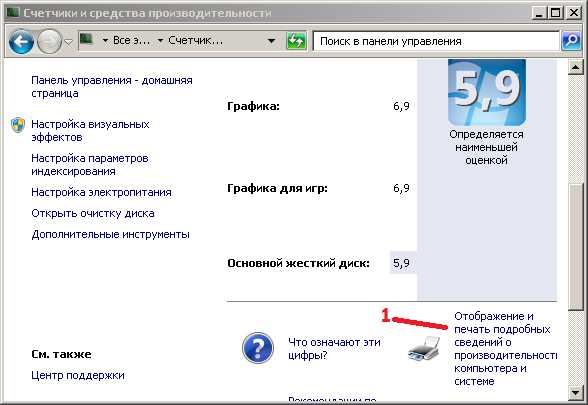 We are looking for the desired item under computer performance ratings
We are looking for the desired item under computer performance ratings In this window, you need to find and click on the item “Display and print detailed information about computer and system performance.” A window will open in which, in the “System” section, you can see the current operating system and whether the computer supports a 64-bit system.
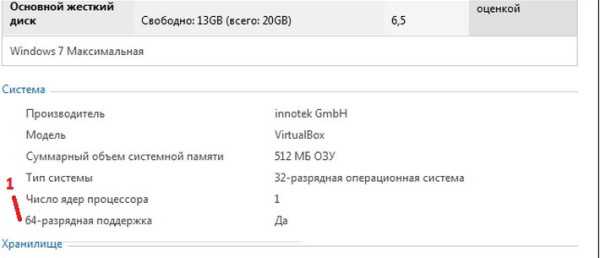 This computer can make the transition from 32 to 64 bit
This computer can make the transition from 32 to 64 bit You can make the transition to a 64-bit system only if it turns out that your computer can support a 64-bit system. Next, if you do not have a disk with the system, then you need to download Window 8 64 bit and, having unzipped the folder twice, you need to run the “SETUP” file. A window called “Windows Installation” will open, click “Install”.
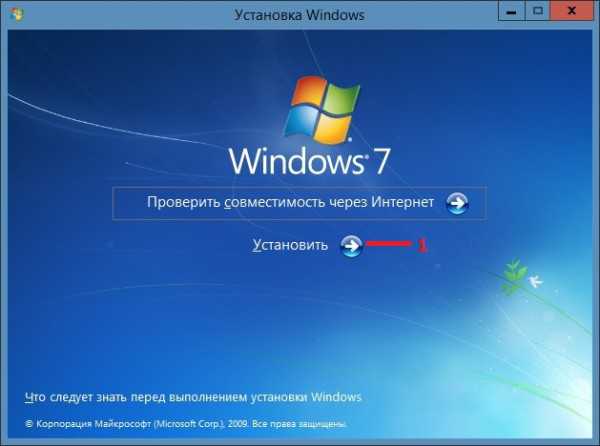 Windows installation initial window
Windows installation initial window A window will open in which you need to mark the “No thanks” item and click the “Next” button.
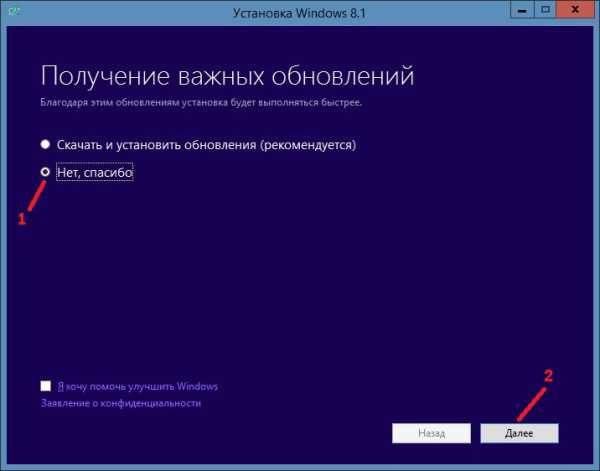 Select the second item
Select the second item A window with license terms will open. In this window, you need to check the box “I accept the license terms” and click the “Accept” button.
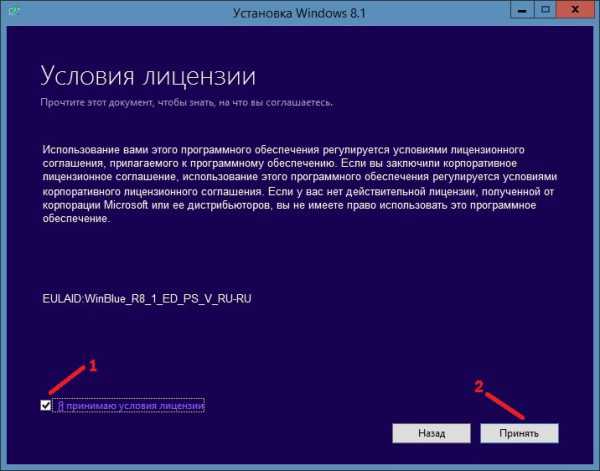 We accept the license terms for installing windows
We accept the license terms for installing windows A window will open in which you need to mark the first item “Save windows settings, personal files and applications” and click the “Next” button.
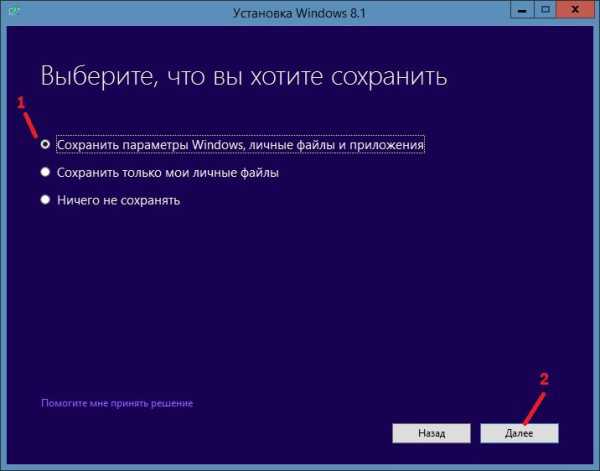 It is very important to select the first option so as not to delete information
It is very important to select the first option so as not to delete information The following window will open in which it says “Let's see if you are ready to install.” This window will load for about 5 or 10 minutes, and then a window will open with the message “Ready to install.”
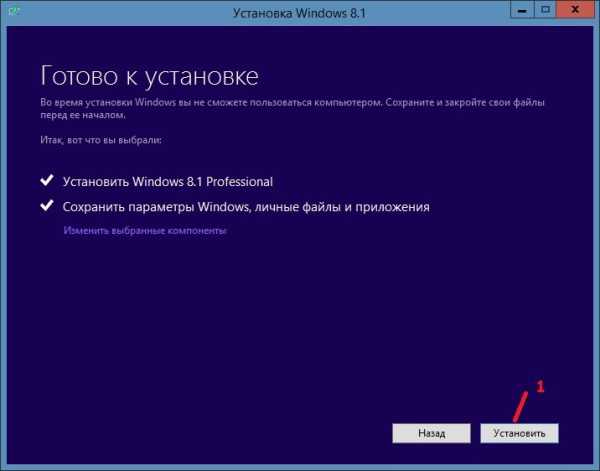 By clicking install you can change the 32 to 64 bit system
By clicking install you can change the 32 to 64 bit system In this window, after clicking the “Install” button, the installation of the operating system will begin. The installation will last about 30 minutes, and after installation you will have a 64-bit system on your computer and all your files, programs and settings you have made will be saved.
kaknakomputere.ru
How to reinstall windows x64 to x32 or vice versa
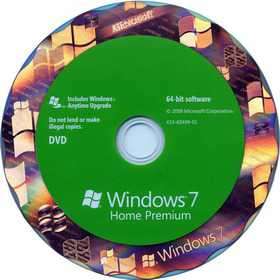 One of the most popular questions about reinstalling an operating system is how to reinstall Windows from 32-bit to 64-bit or vice versa with minimal effort?
One of the most popular questions about reinstalling an operating system is how to reinstall Windows from 32-bit to 64-bit or vice versa with minimal effort?
I must disappoint those who think that in Windows there is a button that, when pressed, will turn your 32-bit operating system into a 64-bit one or vice versa.
Two versions of the same edition of Windows, for example, Windows 7 Home Premium x86 and Windows 7 Home Premium x64, although externally (in terms of interface) do not differ, they are two different operating systems that have significant differences in how they work with computer devices. Even the fact that the drivers for the same devices have two versions - for 32 and 64-bit operating systems, should give rise to the idea that it will not be possible to simply update Windows from 32 to 64-bit.
Therefore, the answer to this question is clear. If you had a 32-bit operating system, but you, for example, expanded the computer's RAM to 4 gigabytes and want to update Windows to the 64-bit version, then you will have to completely reinstall the operating system on the computer. Moreover, it is advisable to reinstall “cleanly”, that is, during installation, format the system disk and install a new version of Windows on the freshly formatted disk. The same applies to the option when you need to switch from 64-bit Windows to the 32-bit version.
A logical question may arise here: if Windows is legal, will the license be lost when installing an operating system of the same edition, but with a different bit rate? As far as I know, the product key is not tied to the bitness of the operating system and, having downloaded the original image of the edition of Windows you need from the Internet, you can easily install it with the old key and activate it absolutely legally via the Internet or by phone.
In addition, if you really have a licensed version, then I recommend contacting Microsoft support. You will be provided with a licensed disk image and you can download it from the official website.
pcsecrets.ru
How to make a 64-bit operating system from a 32-bit operating system
The capacity of the operating system is a rather important aspect that must be taken into account, because it significantly affects how certain games and programs will work on your computer. But what if the current Windows bit size doesn't suit you? Is it possible to somehow change it? The answer is yes, it is possible, under certain circumstances, which we will discuss below. In this article we will look in detail at how to make a 32-bit system 64-bit. Let's figure it out. Go!

And 32-bit systems, as a rule, are installed on weaker computers with a small amount of RAM, since with such a bit depth the OS will not “see” more than 3.5 gigabytes of RAM. And this may be critical for fans of computer games and various powerful software. Let's say your PC has 6 gigabytes of RAM, but you have windows x32 installed. In this case, the system will only accept 3.5 GB, and the remaining 2.5 do not seem to exist. Of course, leaving everything as is makes no sense and such an error needs to be corrected. More details on how to do this later in the article.

Of course not :) You will only need to reinstall the new OS version
It is possible and necessary to turn a 32-bit system into a 64-bit one, but only if your processor supports a higher bit depth. It is also worth noting that such a transition will be advisable only if the amount of memory on the PC’s RAM is 4 GB or more. Among other things, there is a problem with the drivers. Since you will have to download and install special drivers specifically for the 64-bit version. Otherwise, the operation of some devices, services, and other PC components may be disrupted.

Now let's move on directly to how to do this.
- First, you need to make sure that your processor supports x64 bit depth. To do this, download and install the special program CPU-Z. With its help, you will receive all the necessary information about the model and parameters of the CPU.
- If everything is fine and the processor supports a higher bit depth, copy all important data from the hard drive to another medium, since you will lose all files during the transition.
- The next step is to download drivers for the 64-bit version for each device and controller in advance, and then write them to a flash drive or disk.
- Insert an optical disc or USB drive with the operating system into your computer. Please note that the Windows operating system to be installed must be x64 version.
- Select “Install”, check “I accept the terms of the license agreement”, then click “Next”. Go to the “Advanced” section and specify the area of the hard drive on which the current version of Windows is stored.
- Click on “Hard Disk Options (Advanced)” and then click on the “Format” button.
- After the formatting process is completed, all that remains is to enter the PC name, user name, and set a password (if necessary).
- Next you need to enter your product key.
- Now that you have a new operating system in front of you, you need to install x64 version drivers. You can view devices that stopped functioning after changing the bit depth in Device Manager. To go to the window of this utility, right-click on the “My Computer” shortcut and select “Manage”. Then select Device Manager from the menu on the left. After the list appears in front of you, you can click on the desired item and see for which specific component you need to reinstall the drivers (the corresponding list item will be marked with a yellow warning sign “!”)
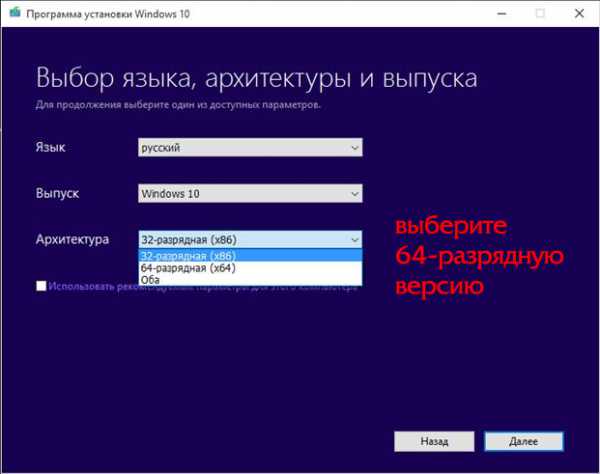
After completing all these steps, the transition to the 64-bit version can be considered complete. Unfortunately, reinstalling the system is the only way to change windows x32 to x64 version. There are no other options and cannot be, since it is impossible to carry out such global changes in the system itself while preserving it.
Now you know that it is possible to make a 32-bit system 64-bit and you know exactly how to do this. Of course, you will have to invest time, but upgrading to higher-bit Windows will give you several benefits that are definitely worth the time and effort. Write in the comments whether this article helped you and share with other users information about whether you were able to switch from one bit depth to another and what the pros and cons are for you.

